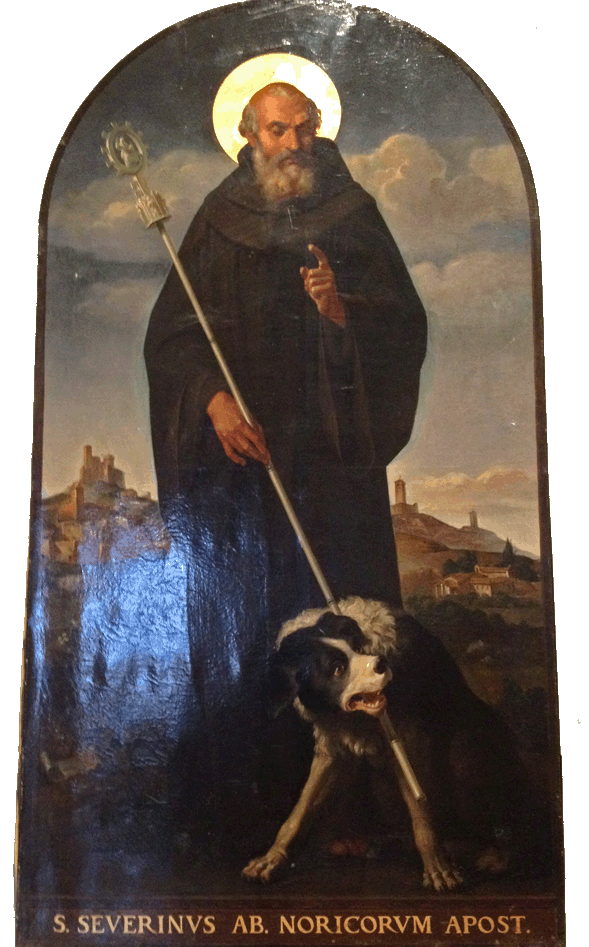
Ludwig Seitz
St. Severinus of Noricum
1879-81
Museo d'Arte Sacra, San Leo, Italy
The inscription means "St. Severinus, Abbot, Apostle of the Norici" – that is, of the people of "Noricum," a Roman province encompassing most of what are now Austria and Slovenia. The crozier in his right hand is the symbol of his authority as an abbot. He established a number of monasteries, which may explain the buildings in the background.
As for the St. Bernard dog at the saint's feet, no such animal is mentioned in Eugippius's definitive Life of St. Severin. There are two possible explanations, neither especially satisfying.
First, Eugippius does recount an episode (81-82) in which travelers lost in the snows of the Alps took cover under a tree and fell asleep there. The saint appeared to them in a dream and said, "Fear not, complete your journey." Then a bear came to them and "immediately disclosed the desired road, and for about two hundred miles, turning aside neither to the left nor to the right, showed a passable way." A bear is not a dog, but this one's behavior is so much like the famous assistance provided by St. Bernards in the Alps that the artist may have thought the substitution appropriate.
The other possible explanation relates to a boy who perished in the eruption that destroyed Pompeii. By his side, apparently having attempted to shield him from the hot ash, was a dog whose collar announced it had saved the boy's life several times. The dog's name was Delta, and the boy's name was Severinus (Coren, 145).
View this image in full resolution.
Read more about St. Severinus of Noricum.
Photographed at the museum by Richard Stracke, shared under Attribution-NonCommercial-ShareAlike license.